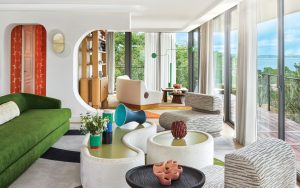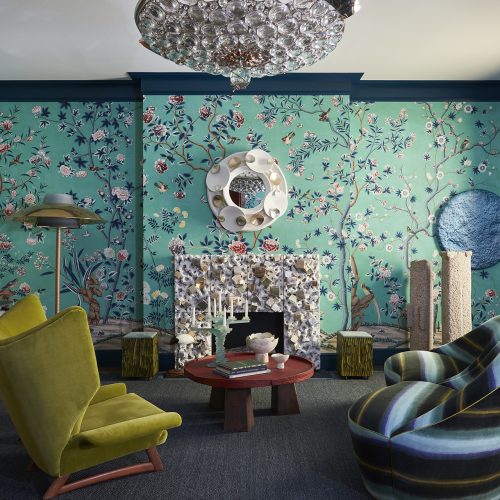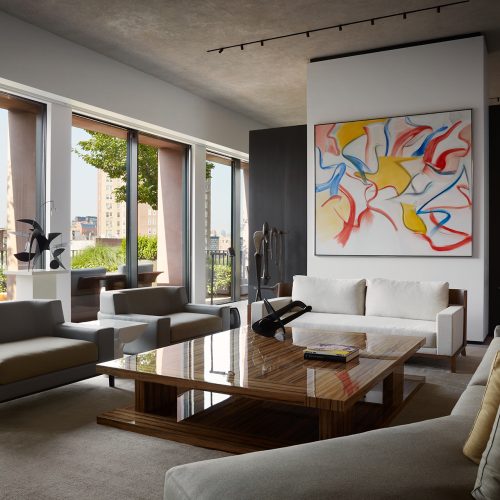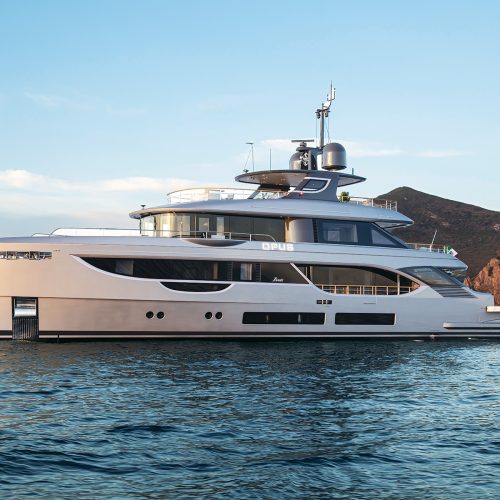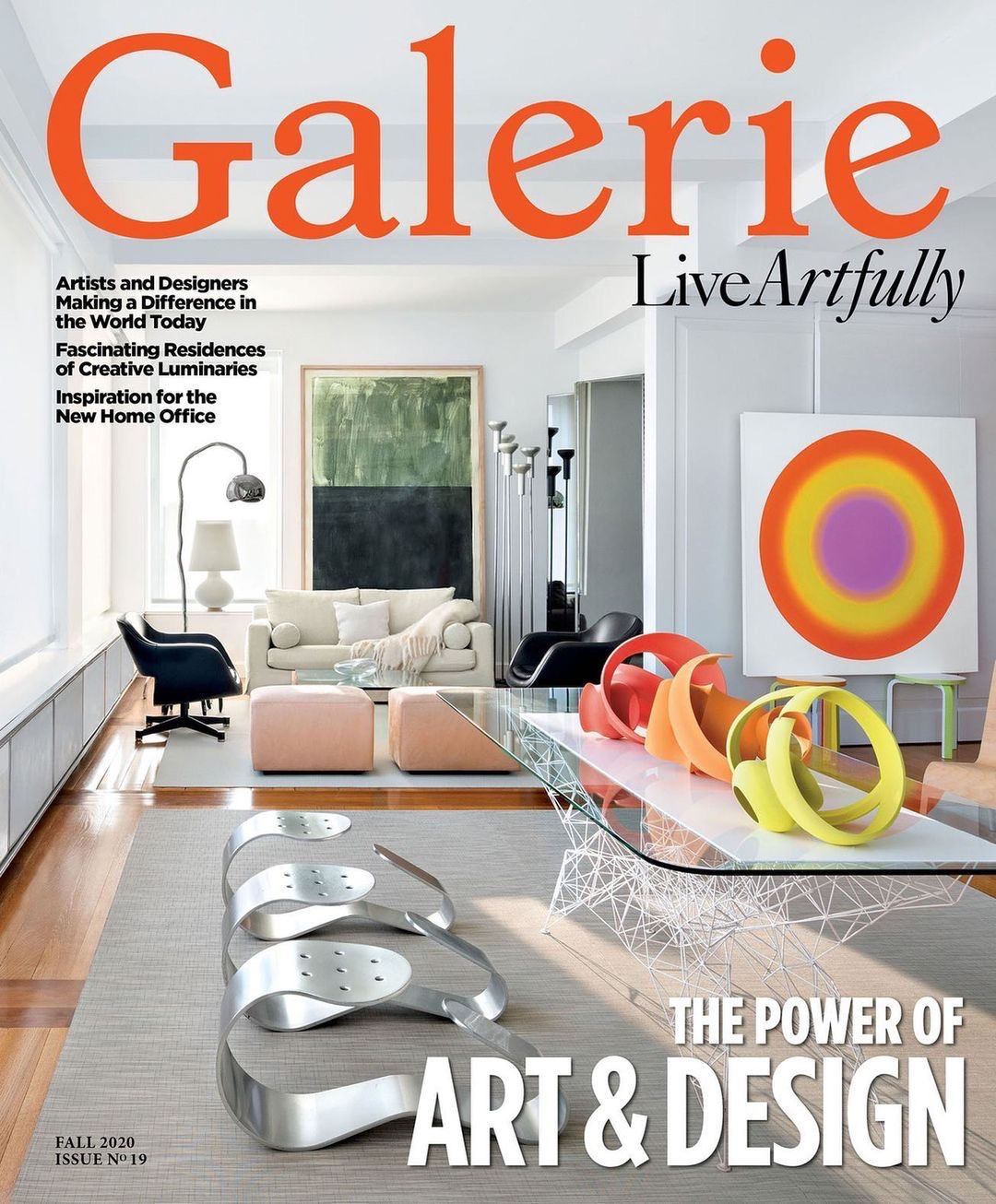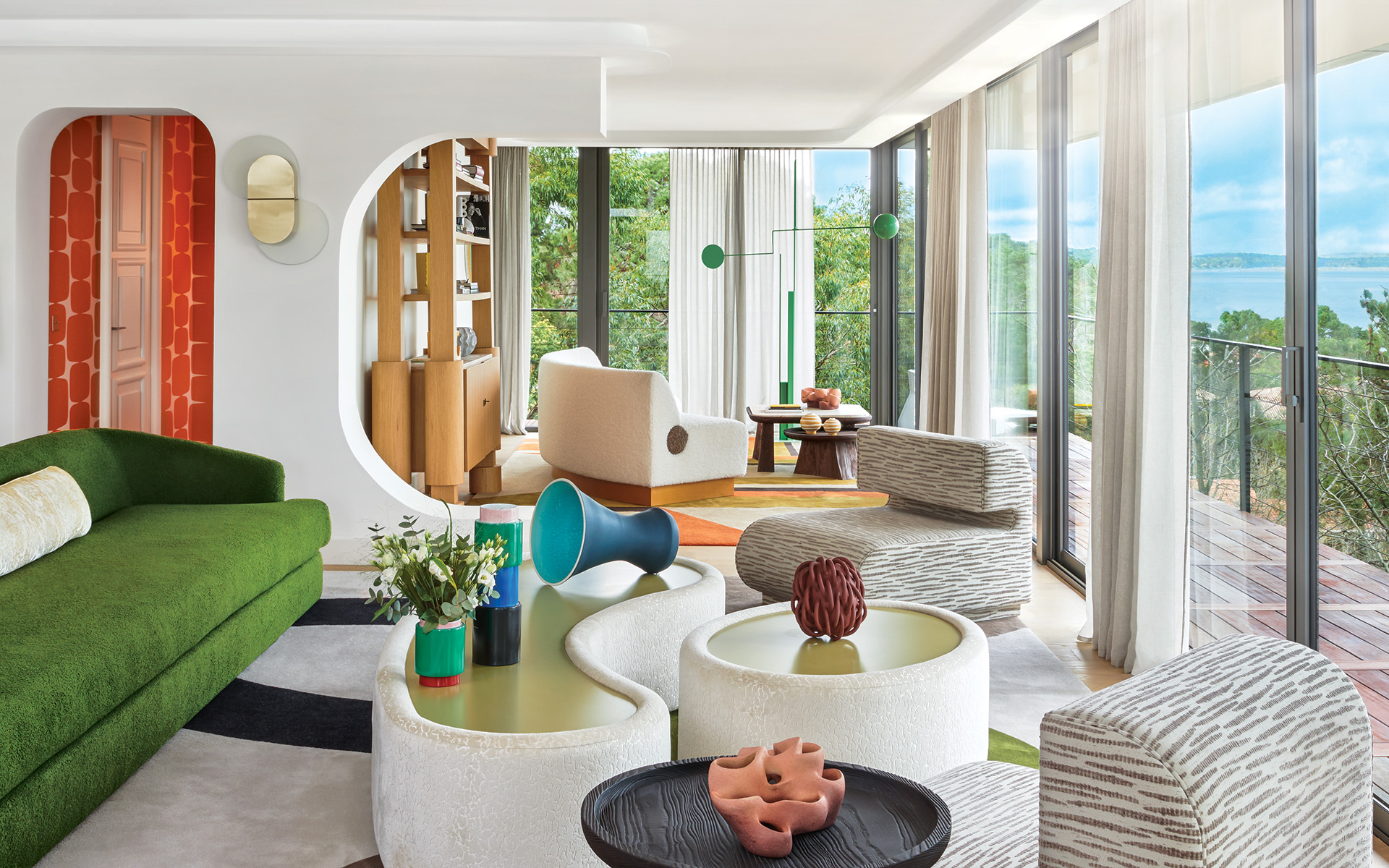

Tour a French Architectural Marvel Filled with Curves and Color
Designer Fabrice Juan updates a modernist retreat using inspiration from its seaside setting in Cap Ferret, France

Fabrice Juan stands next to one of the home’s distinctively curved columns and a wall-mounted light of his design. Photo: Xavier Béjot
When Paris-based designer Fabrice Juan was enlisted by a client to refresh a modernist vacation home in Cap Ferret, on France’s Atlantic coast, he sought inspiration from the cinematic views. Designed in 1970 by Michel Pétuaud-Létang, an architect from nearby Bordeaux, the house features expansive windows that ensure every room is infused with “the atmosphere of the Arcachon Basin and the golden Cap Ferret light,” says Juan. “The house, with its incredible architecture, is completely immersed in nature.”
In keeping with Pétuaud-Létang’s design, it was imperative that the flow between inside and outside remain intact and that any updates work in harmony with the original structure. This meant making the most of the main, upper level of the house, which is fully glazed on three sides and projects outward with a cantilevered, wraparound balcony shaded by the overhanging roof.
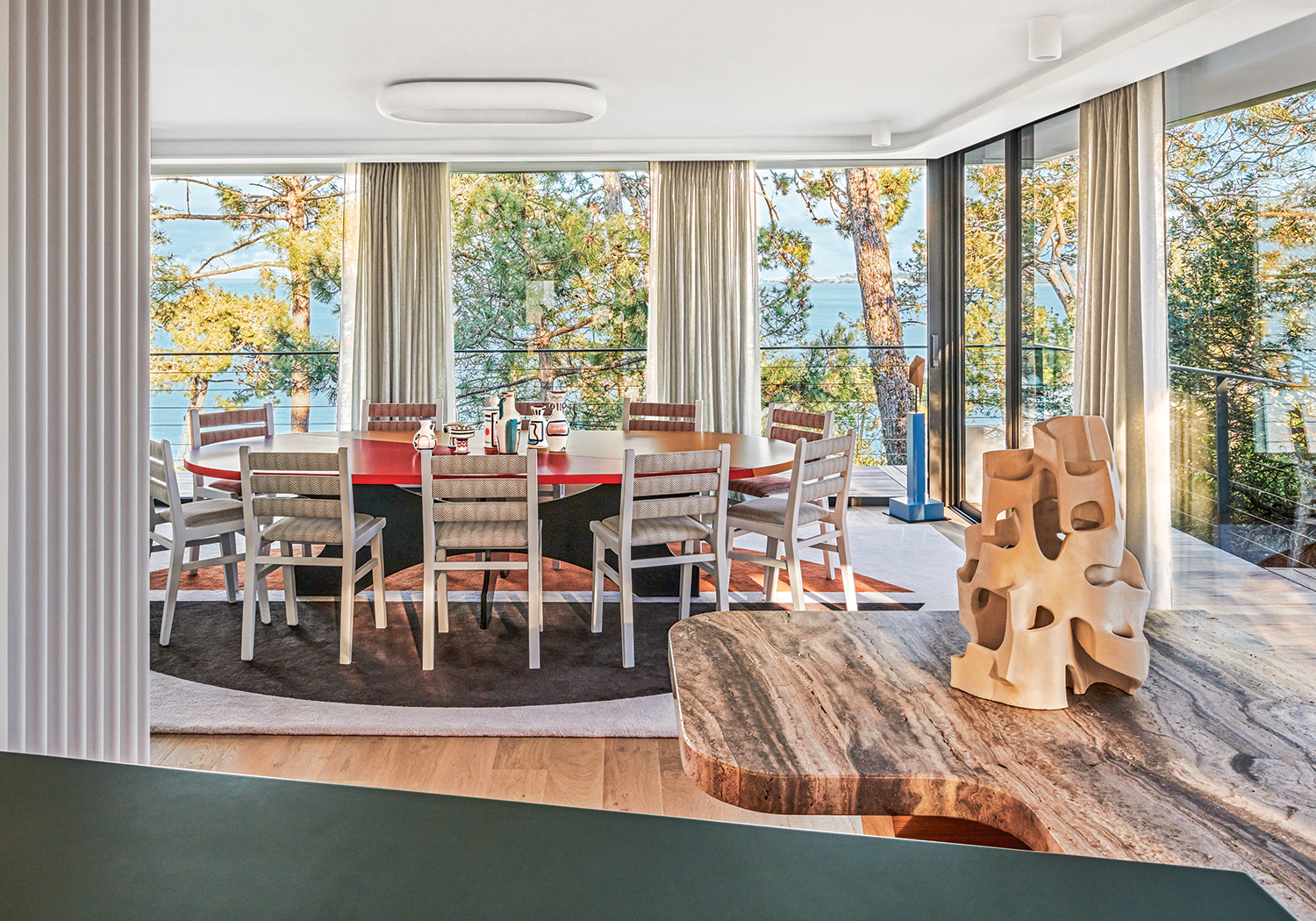
A Camille Le Dressay sculpture perches on the travertine bar counter in the kitchen, which opens to a dining area where Juan designed the plaster ceiling light, the lacquer-top table, and the rug as well as the chairs, produced by Marc de Berny. The tabletop ceramics are by LRNCE, the sculpture in the corner is by Xavier Veilhan, and a Casamance fabric was used for the curtains. Photo: Xavier Béjot
Counterweighted by a concrete garage below, the house feels as if it is floating among the sand dunes and maritime pines. “It has a very sculptural appearance,” says Juan. “It could almost be considered a work of art.”
Across the bright, open main floor, the entertaining areas connect seamlessly, never interrupting the impressive panorama visible from every window. Everything has been tailored with ease, intimacy, and comfort in mind. This is a home, Juan notes, “to be enjoyed fully with family and friends.”
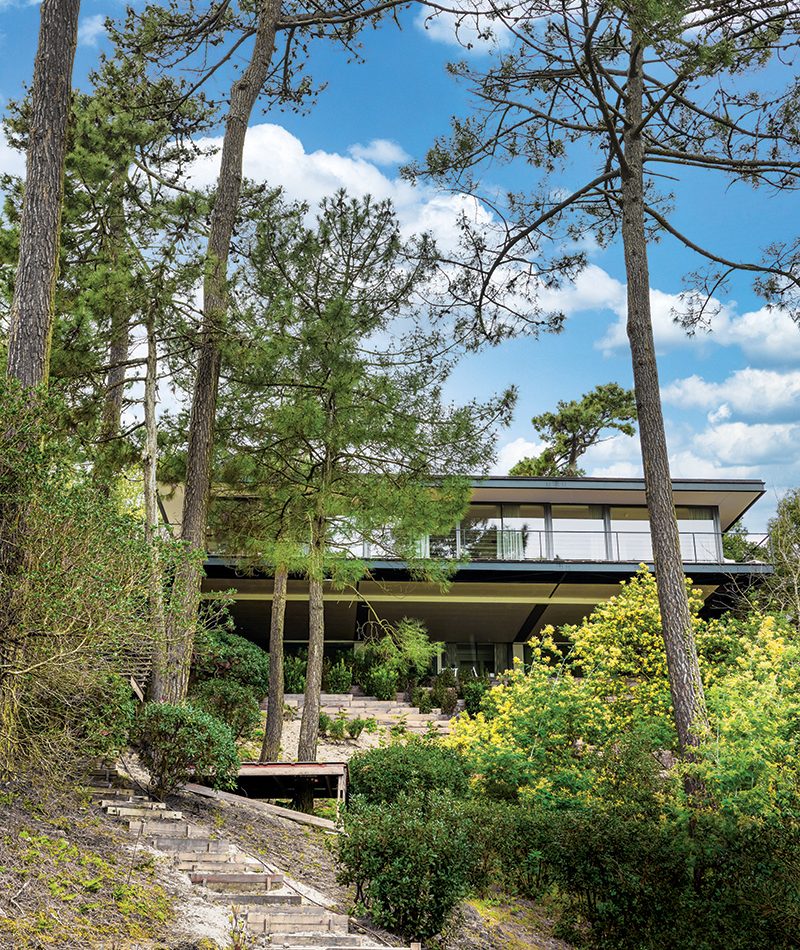
Conceived in 1970 by architect Michel Pétuaud-Létang, the house nestles among maritime pines, overlooking Arcachon Bay on the Atlantic coast. Photo: Xavier Béjot
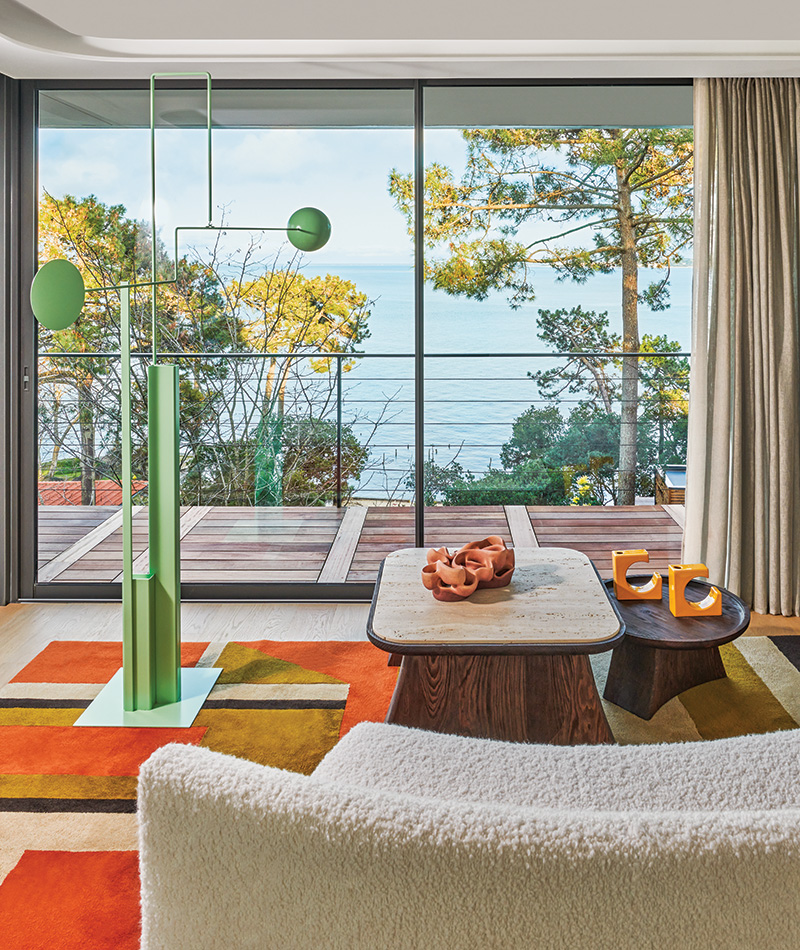
At one end of the living room, a Xavier Veilhan stabile presides over a den-like seating area with Juan-designed furnishings, including tables made by Marc de Berny that host a Camille Le Dressay ceramic sculpture and Pierre Cardin vases. Photo: Xavier Béjot
To soften the modern rectilinearity of the exterior architecture, Juan embellished the inside with sumptuous curves, inspired partly by the living and dining area’s distinctive C-shaped structural columns. “I wanted to emphasize them with a large, rounded cornice that runs along the top of the windows and walls,” says the designer, who took that sensuously sculptural line and threaded it throughout the house via rounded doorways and cabinets, elliptical light fixtures, and curvy, organically shaped sofas, lounge chairs, and tables. It is also reflected in the rounded forms of artworks by Xavier Veilhan, Marc Uzan, and Julie Bergeron. Juan even surrounded the fireplace with corrugated plaster, a gesture he describes as “a way of interpreting the undulations of the ocean.”
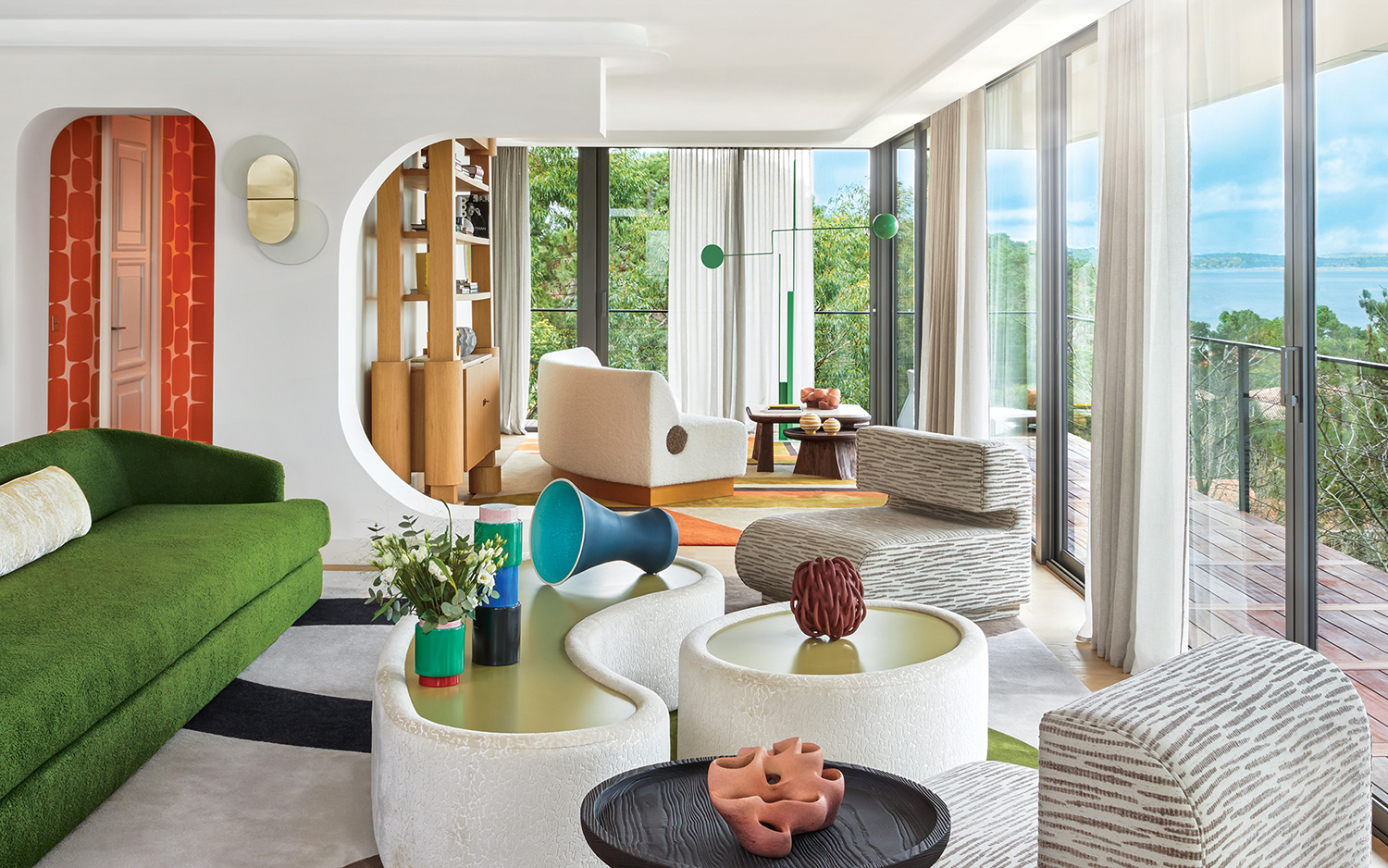
Designer Fabrice Juan reimagined the interiors of this stunning retreat in Cap Ferret, France. Photo: Xavier Béjot
Woven through all of Juan’s projects is a devotion to the French art of living, an ethos that celebrates unflinching attention to detail, a passion for the finest materials, and an appreciation for the richness of the country’s tradition of craftsmanship. Whether reimagining a grand Haussmann-style apartment in Paris or designing furnishings and accessories for the likes of Maison Pouenat, Métaphores, Marc de Berny, and Tai Ping (which debuted his collection of prêt-à-porter rugs last year), he takes an approach that is about “reinterpreting traditional methods with a freshness,” he says.
Here, Juan worked with expert craftsmen to design almost all the furniture—both new and customized from his collections—as well as the cabinetry, lighting, and rugs. “In my design process, I want the decor to reflect the architecture, like the way the tabletop overhangs the kitchen island, echoing the silhouette and sense of balance of the house,” he says. The living room sofa, one of his existing designs expanded to some 16 feet long, provides a generous perch for taking in the magnificent views over the basin.
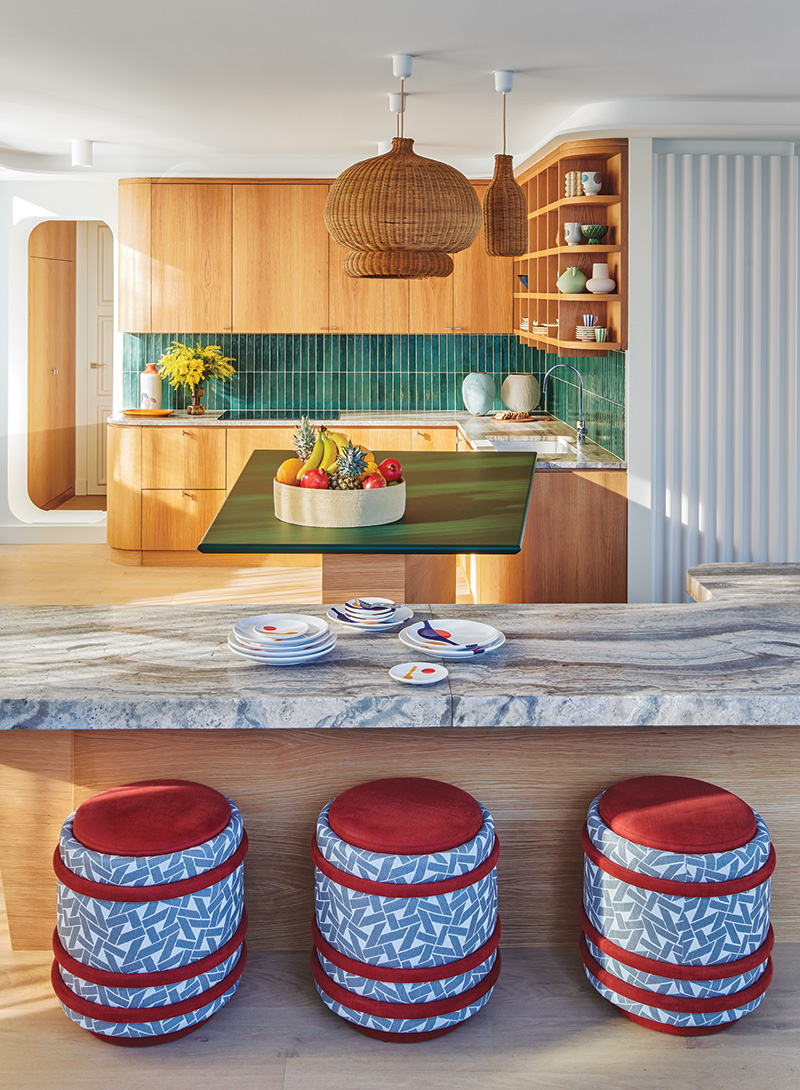
Ferm Living pendants hang in the kitchen, which features custom brushed-oak cabinetry—offset by a backsplash of Maison Surface tiles—as well as a lacquered metal table and a travertine bar, all by Juan, who also designed the plates and the poufs, upholstered in Nya Nordiska fabrics. Photo: Xavier Béjot
Texture plays an equally important role. Juan emphasized the tactility of materials such as brushed oak and natural pine, honed travertine, and braided rattan, not to mention silky wool patterned rugs. “It is a challenge to strike the right balance between architectural form, color, and pattern, but the desired effect is always surprise and a feeling of comfort,” says Juan, who studied woodworking and interior design before spending a decade at Jean-Louis Deniot’s firm and ultimately establishing his own practice in 2011.
“It has a very sculptural appearance. It could almost be considered a work of art”
Fabrice Juan
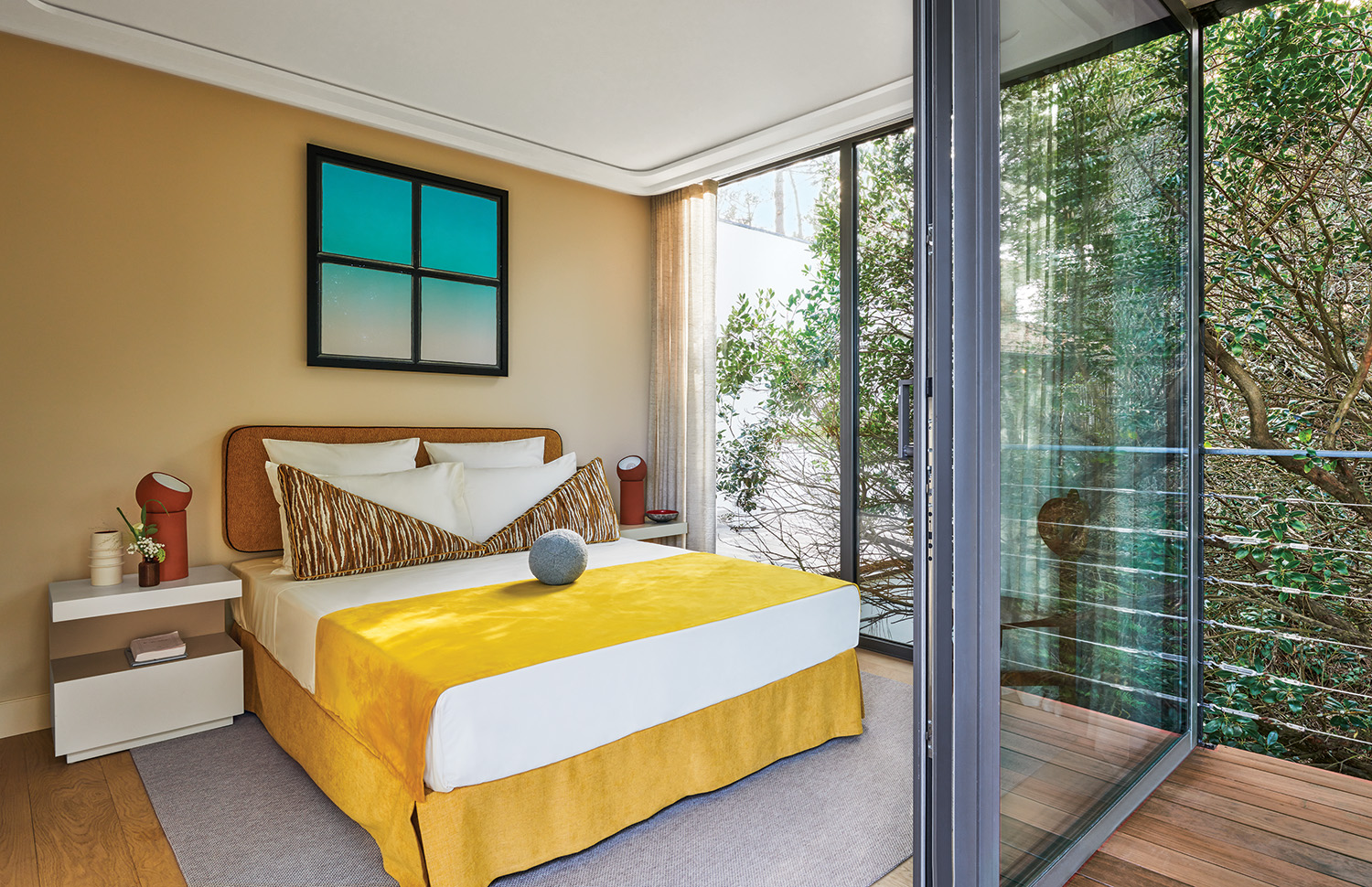
An artwork by Martin d’Orgeval is installed over a guest room’s custom-made bed with pillows in a Misia fabric; the rug is a Juan design made by Marc de Berny. Photo: Xavier Béjot
For the home’s color palette, Juan drew heavily on the hues of the Cap Ferret peninsula—the azure blue of sea and sky, the greens of the trees, the white of the sandy beaches. But he also peppered the spaces with colors that feel “a little more Pop,” as he puts it. Hits of blazing orange accent a wallpaper here and a rug there. Cherry red borders a bathroom mirror. A citrusy yellow enlivens the bed skirt and throw in a guest room, evoking the “sunny glow that’s ever present in southwest France,” he notes.
When someone enters one of Juan’s spaces, he wants them to be seduced. But he also hopes “people will feel quickly at home and make the place their own,” he says, likening his role as designer to that of a “great couturier” tailoring a fine garment to fit as effortlessly as a second skin. “Beauty, class, and good taste,” he adds, “should be easy to live with.”
A version of this article first appeared in print in our 2024 Spring Issue under the headline “Coastal Utopia.” Subscribe to the magazine.

